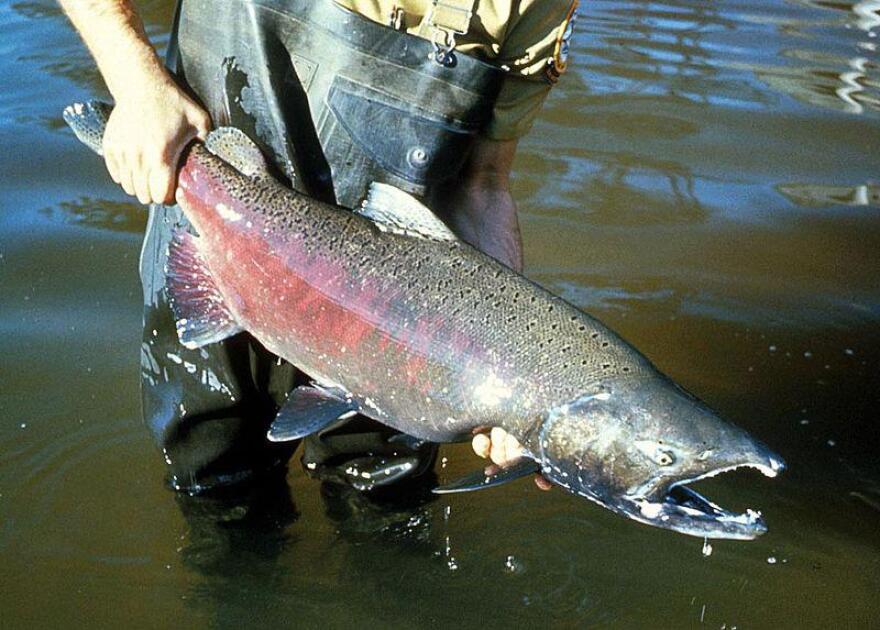Every good fish story seems to be based in the past, and as most fishermen will tell you, the fish were bigger way back when. But in the case of chinook, or king salmon, that actually seems to be the case. At the turn of the twentieth century, you can find photographs of fishermen holding up massive king salmon, now, not so much. But a recent study published in Wiley Online Library may have an idea as to why kings up and down the West Coast are shrinking.
Daniel Schindler is a professor at the University of Washington, and he studies fisheries at the university’s School of Fisheries and Aquatic Sciences.
Schindler and three of his colleagues were interested in studying the piecemealed scientific evidence and anecdotal stories about shrinking king salmon.
“What we did was really to take the first coast-wide quantitative assessment of whether those changes were occurring, what the magnitude of change was, and then last, whether there was any geographic organization to the changes,” he explained.
Schindler said the interest actually came from right here in Cook Inlet, where king stocks have been in decline for about the last 10 years and fish have been noticeably getting smaller.
Schindler and his colleges analyzed data from fish tagging projects, catch and fishery management data from states and the Canadian government. They found that overall, older king salmon are getting smaller.
“It was only the oldest age classes, particularly the five-year-old marine age and four-year-old marine age fish that seemed to be achieving a smaller size when they return,” Schindler added.
The trend was most pronounced in Cook Inlet and Western Alaska where the size of kings have declined about 10-percent. The farther South you go, the less pronounced the change is, but Schindler said that’s because older kings are a less significant part of southern populations.
There is no singular, concrete answer as to why king salmon are shrinking, but Schindler explains there is some large factor that is selectively removing the largest fish from king populations.
Commercial fishing might be the first thought that comes to mind, but Schindler said commercial fishing intensity for kings has declined over the past 25 years. He adds that the answer may be an increase in killer whale populations during that time.
“That’s the time period where we see the largest decline in sizes of these big chinook salmon,” he said. “What is now just slowly becoming appreciated by the scientific community and the public is that the number of these resident killer whales has increased dramatically over that time period.”
Schindler explains that northern populations of killer whales, from Vancouver Island to the Gulf of Alaska, have doubled in the last 25 years. He said killer whales are known to target the largest fish they can.
“In fact, the resident killer whales are much more size selective for the largest fish than commercial fisheries ever were,” Schindler noted
Despite whether killer whales are the cause of the decline in older kings, their dwindling numbers may pose a problem for fishery managers.
Currently, fisheries are managed based upon how many fish make it up river to spawn, and Schindler said fewer older kings could reduce a river system’s reproduction capacity.
Still there are more questions than answers, and there is no particular plan to follow up this study. But Schindler hopes it will lead to more filed research on the interaction between king salmon and killer whale populations.


